
Mr. Alvin J Alexander, "How I Sold My Business: A Personal Diary"
English | 2014 | ISBN: 1495427099 | 260 pages | AZW3 / EPUB / MOBI / PDF | 3 MB
[center]
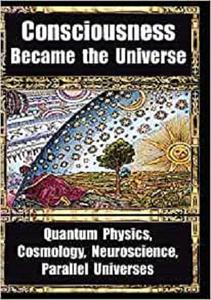
How Consciousness Became the Universe: Quantum Physics, Cosmology, Neuroscience, Parallel Universes by Deepak Chopra
English | February 11, 2017 | ISBN: 1938024451 | 572 pages | EPUB | 6.22 Mb
Contents I: How Consciousness Became the Universe 1. How Consciousness Becomes the Physical Universe 2. Perceived Reality, Quantum Mechanics, and Consciousness 3. Quantum Reality and Mind 4. Space, Time and Consciousness 5. Does the Universe have Cosmological Memory? Does This Imply Cosmic Consciousness? 6. Cosmological Foundations of Consciousness 7. What Consciousness Does: A Quantum Cosmology of Mind 8. Detecting Mass Consciousness: Effects of Globally Shared Attention and Emotion II: Neuroscience, Cosmology and the Evolution of Consciousness of the Universe 9. Paleolithic Cosmic Consciousness of the Cosmos 10. The Brain and Consciousness: Dynamics and Evolution 11.Quantum Physics the Multiplicity of Mind: Split-Brains, Fragmented Minds, Dissociation, Quantum Consciousness 12. Many Mansions: Special Relativity, Higher-Dimensional Space, Neuroscience, Consciousness and Time 13. Brain, Consciousness, and Free Will 14. Consciousness in the Universe: Neuroscience, Quantum Space-Time Geometry and Orch OR Theory III. Consciousness, Quantum Physics, Relativity, Precognition, Retrocausation, Multiple Dimensions, Entanglement, Time 15. The Theory of MindTime 16. Consciousness of Continuity in Time 17. The Time Machine of Consciousness. Past Present Future Exist Simultaneously. Entanglement, Tachyons, Relative Time, Circle of Time, Quantum Time, Dream Time, PreCognition, Retrocausation, Deja Vu, and Premonitions 18. The Observer's Now, Past and Future in Physics from a Psycho-Biological Perspective 19. Synchronicity, Entanglement, Quantum Information and the Psyche 20. Consciousness, the Paranormal and Higher Dimensions IV. Uncertainty Principle, Parallel Universes, Wave Functions, Entanglement, Violations of Causality, and Paradoxes of Time Travel 21. Multiverse Scenarios in Cosmology: Classification, Cause, Challenge, Controversy, and Criticism 22. Classical Anthropic Everett Model: Indeterminacy in a Preordained Multiverse 23. Cosmology, The Uncertainty Principle, Wave Function, Probability, Entanglement, and Multiple Worlds 24. Logic of Quantum Mechanics, Parallel Worlds and Phenomenon of Consciousness V: THE AFFECT OF CONSCIOUSNESS OBSERVING THE UNIVERSE 25. Consciousness and Quantum Physics: A Deconstruction of the Topic 26. Consciousness and Quantum Measurement 27. A Quantum Physical Effect of Consciousness 28. The Conscious Observer in the Quantum Experiment 29. Does Quantum Mechanics Require A Conscious Observer? 30. Quantum Physics, Advanced Waves and Consciousness 31. How Consciousness Became the Universe
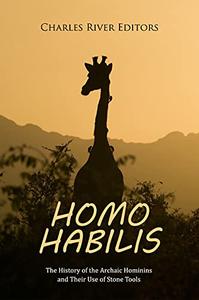
Homo habilis: The History of the Archaic Hominins and Their Use of Stone Tools by Charles River Editors
English | June 11, 2021 | ISBN: N/A | ASIN: B09755TYYQ | 60 pages | EPUB | 0.66 Mb
The evolutionary path from the original primates to modern man is a long one and has taken many twists and turns, but naturally, as the fossil record grows, scientists gain a more complete understanding of our own mental and physical history in terms of genetics and anatomy. However, the correct order and relationships of the various specimen types are difficult to pin down. Many representative samples have been found in such minute amounts as to not preclude anomalies. They have been discovered in various stages of wear. Modern features did not occur simultaneously or uniformly, taking millions of years to become manifest in later types. Up to the present day'sHomosapiens, examples of the main types have been hybrids of older and more modern features.
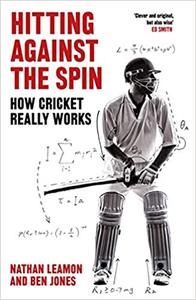
Nathan Leamon, Ben Jones, "Hitting Against the Spin: How Cricket Really Works"
English | 2021 | ISBN: 147213124X | 400 pages | EPUB | 2.8 MB
'Fascinating and insightful . . . lifts the curtain to reveal the inner workings of international cricket. A must-read for any cricketer, coach or fan' Eoin Morgan

Heretic: Why Islam Needs a Reformation Now By Ayaan Hirsi Ali
2015 | 288 Pages | ISBN: 0062333933 | PDF | 1 MB
Continuing her journey from a deeply religious Islamic upbringing to a post at Harvard, the brilliant, charismatic and controversialNew York TimesandGlobe and Mail#1 bestselling author ofInfidel andNomadmakes a powerful plea for a Muslim Reformation as the only way to end the horrors of terrorism, sectarian warfare and the repression of women and minorities.Today, she argues, the world's 1.6 billion Muslims can be divided into a minority of extremists, a majority of observant but peaceable Muslims and a few dissidents who risk their lives by questioning their own religion. But there is only one Islam and, as Hirsi Ali shows, there is no denying that some of its key teachings-not least the duty to wage holy war-are incompatible with the values of a free society.For centuries it has seemed as if Islam is immune to change. But Hirsi Ali has come to believe that a Muslim Reformation-a revision of Islamic doctrine aimed at reconciling the religion with modernity-is now at hand, and may even have begun. The Arab Spring may now seem like a political failure. But its challenge to traditional authority revealed a new readiness-not least by Muslim women-to think freely and to speak out.Courageously challenging the jihadists, she identifies five key amendments to Islamic doctrine that Muslims have to make to bring their religion out of the seventh century and into the twenty-first. And she calls on the Western world to end its appeasement of the Islamists. "Islam is not a religion of peace," she writes. It is the Muslim reformers who need our backing, not the opponents of free speech.Interweaving her own experiences, historical analogies and powerful examples from contemporary Muslim societies and cultures,Hereticis not a call to arms, but a passionate plea for peaceful change and a new era of global toleration. In the wake of the Charlie Hebdo murders, with jihadists killing thousands from Nigeria to Syria to Pakistan, this book offers an answer to what is fast becoming the world's number one problem.

Octávio Luiz Motta Ferraz, "Health as a Human Right: The Politics and Judicialisation of Health in Brazil "
English | ISBN: 110848364X | 2020 | 320 pages | PDF | 5 MB
Does human rights law work? This book engages in this heated debate through a detailed analysis of thirty years of the right to health - perhaps the most complex human right - in Brazil. Are Brazilians better off three decades after the enactment of the right to health in the 1988 Constitution? Has the flurry of litigation experienced in Brazil helped or harmed the majority of the population? This book offers an in-depth analysis of these complex and controversial questions grounded on a wealth of empirical data. The book covers the history of the recognition of health as a human right in the 1988 Constitution through the Sanitary Movement's campaign and the subsequent three decades of what Ferraz calls the politics and judicialization of health. It challenges positions of both optimists and sceptics of human rights law and will be of interest to those looking for a more nuanced analysis.
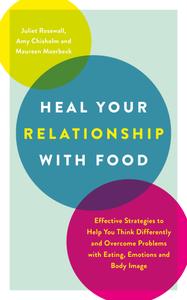
Heal Your Relationship with Food: Effective Strategies to Help You Think Differently and Overcome Problems with Eating, Emotions and Body Image by Juliet Rosewall, Amy Chisholm and Maureen Moerbeck
English | April 1st, 2021 | ISBN: 1789561272 | 224 pages | True EPUB | 3.96 MB
Many of us have an unhealthy relationship with food.
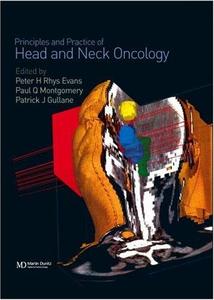
Head and Neck Oncology: Principles and Practice of By Peter H. Rhys Evans, Paul Q. Montgomery, Patrick J. Gullane
2003 | 648 Pages | ISBN: 1899066063 | PDF | 28 MB
[center]
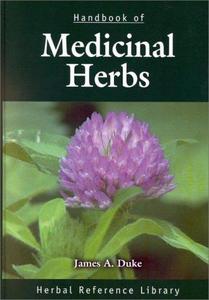
Handbook of Medicinal Herbs: Herbal Reference Library By James A. Duke
2001 | 677 Pages | ISBN: 0849329280 | PDF | 104 MB
A Practical, Authoritative CompendiumThis handbook catalogs 365 species of herbs having medicinal or folk medicinal uses, presenting whatever useful information has been documented on their toxicity and utility in humans and animals. Plants from all over the world - from common cultivars to rare species - are included in these 700 pages. The toxicity of these species varies, but the safety of each has been formally or informally questioned by the Food and Drug Administration, National Cancer Institute, Department of Agriculture, Drug Enforcement Administra-tion, or Herb Trade Association.Easy-to-Locate Facts and FiguresDesigned to enable fast access to important information, this hand-book presents information in both catalog and tabular forms. In the catalog section, plants are presented alphabetically by scientific name. (The index permits you to locate an herb by its common name.) A detailed sketch of the chief identifying features accompa-nies most catalog entries. For each species the following information, as available, is presented and referenced:Family and colloquial namesChemical contentUses and applications - present and historicalProcessing, distribution, and economic potentialToxicological agents and degree of toxicityPoison symptoms in humans and animalsTreatment and antidotes References to original literatureFive Tables of Accessible DataGiven a plant species, you can easily determine its toxins; or, given a toxin, you can discover which plants contain it. These and other data are presented in convenient tabular formats as appendixes to the handbook. Other information contained in these tables include toxicity ranking and other toxicity data (as applicable), such as mode of contact, organs affected, and lethal dose; and proximate analyses of selected foods. These tables are titled:Medicinal Herbs: Toxicity Ranking and PricelistToxins: Their Toxicity and Distribution in Plant GeneraHigh Plant Genera and Their ToxinsPharmacologically Active PhytochemicalsProximate Analyses of Conventional Plant Foods
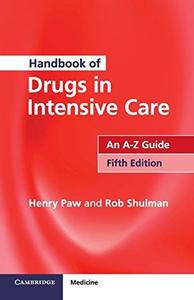
Handbook of Drugs in Intensive Care: An A-Z Guide By Henry Paw, Rob Shulman
2014 | 355 Pages | ISBN: 1107484030 | PDF | 4 MB
A thoroughly updated edition of this well-established guide to drugs and prescribing for intensive care. The book is split into two sections: an A-Z guide to the drugs available, and concise notes on the key topics and situations faced on a daily basis. The A-Z section provides succinct information on each drug including uses, limitations, administration directions and adverse effects. The second section details complications that may arise in patients with particular conditions such as diabetes, epilepsy and renal failure, and other factors that may affect drug prescribing. This revised edition includes eleven new drug monographs and covers several new topics, including sepsis and drugs for organ donation. A colour fold-out chart showing drug compatibility for intravenous administration is available online. Presented in a concise, compact format, this book is an invaluable resource for doctors, nurses, pharmacists and other healthcare professionals caring for critically ill patients.


